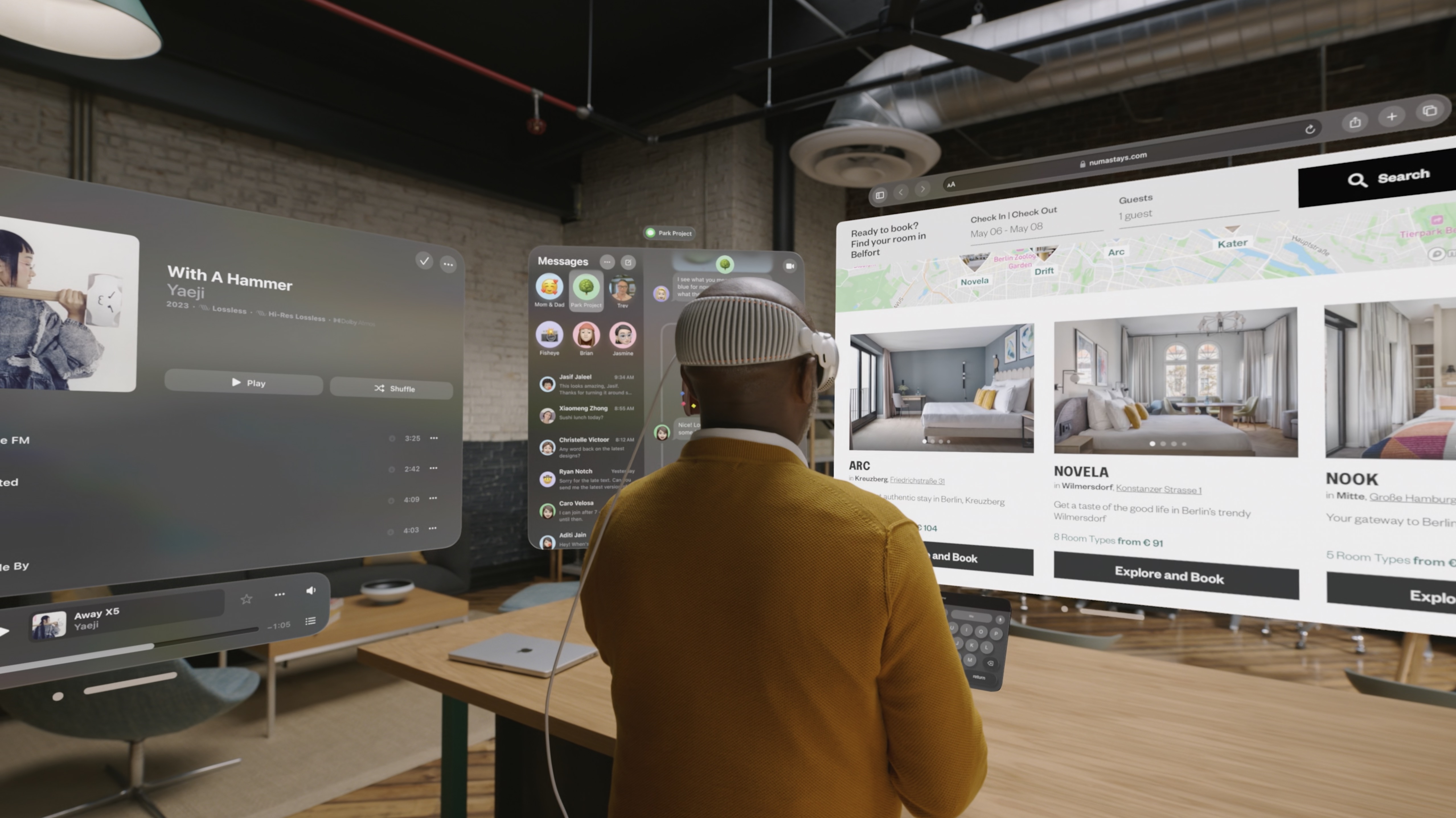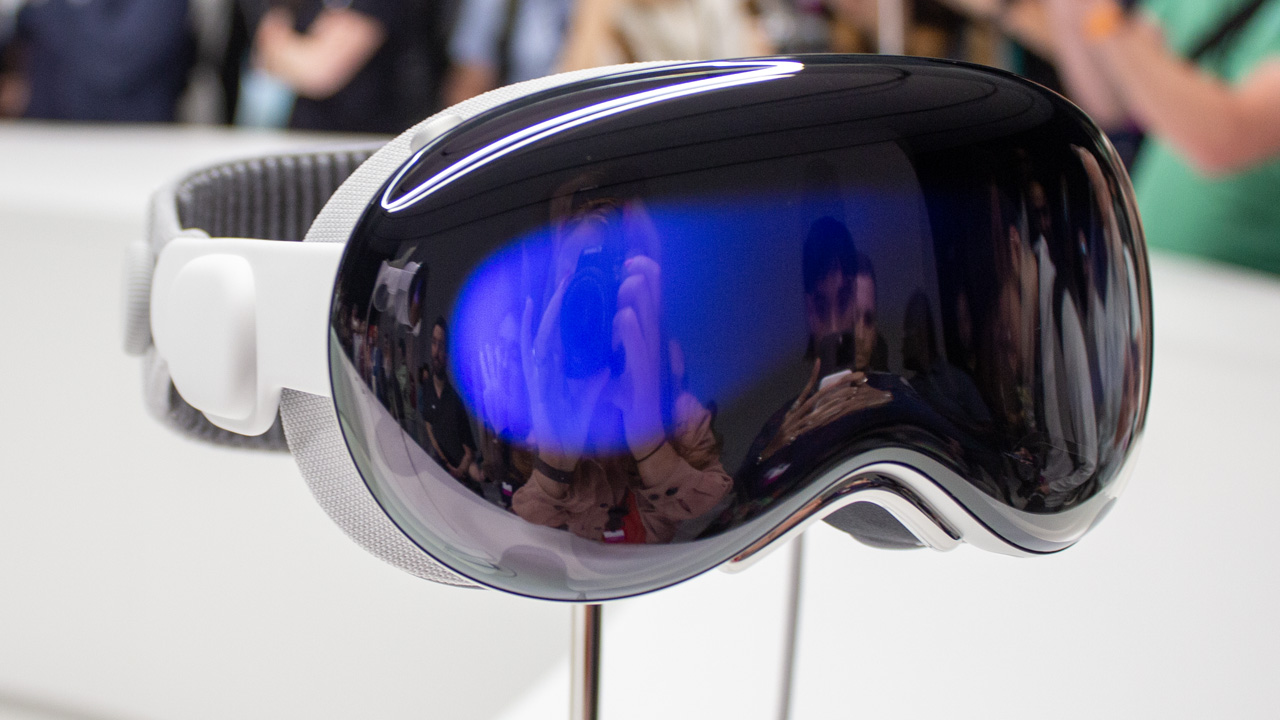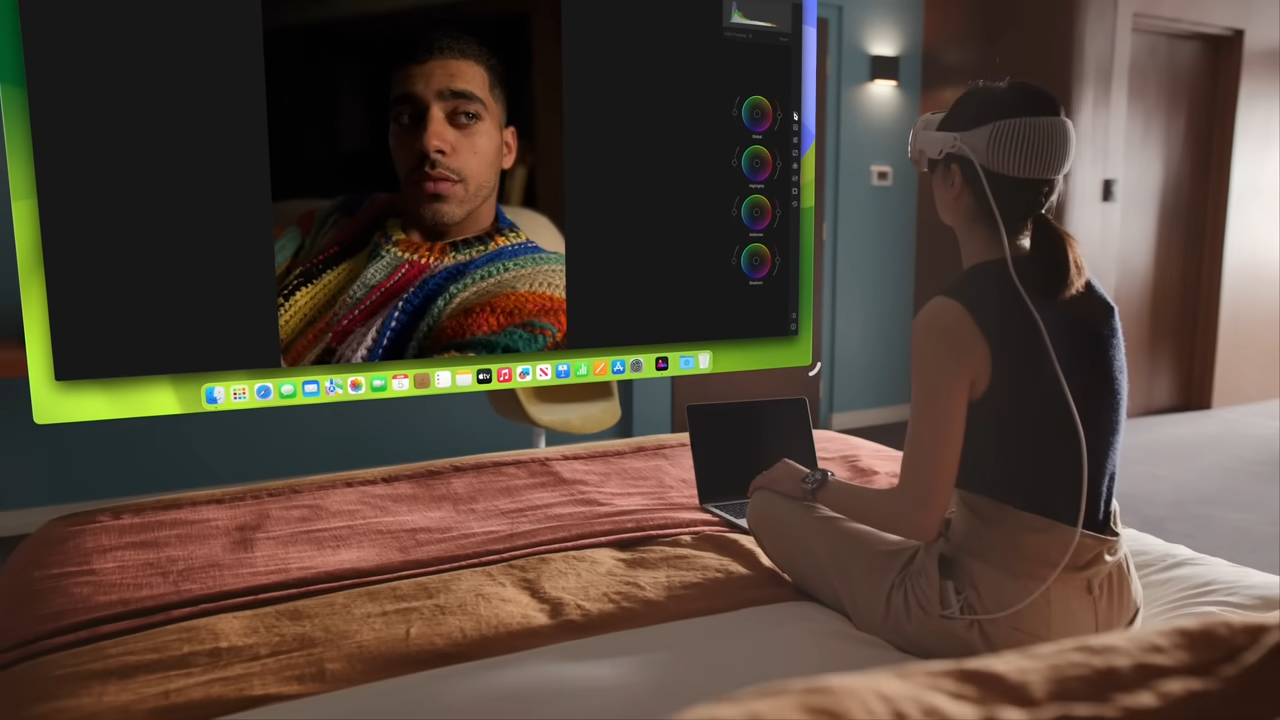The Apple Vision Pro: When technology can't keep up with ambition but offers a glimpse into the future
Apple's Vision Pro is here but it's really all about what comes next.

I'll come clean. I've been writing this now for a few days, on and off, and it's been scrapped and rewritten more than a few times as well. See, the problem isn't the Apple Vision Pro, it's me. I haven't had a chance to spend any time with Apple's first foray into the spatial computing world because I live in the wrong part of the world and those of us outside the United States will have to wait a little while longer before we get to see what all the fuss is about. But I've been watching from afar. Engorging myself with every little bit of Apple Vision Pro information, every review, every post on social media to see how the headset is being received.
The real question isn't what early Apple Vision Pro reviewers had to say, they aren't normal people. Like me, these people spend their lives with technology, writing and talking about it for umpteen hours every day whether they want to or not. And when technology becomes a job, you'd be amazed how quickly it becomes the norm. Not boring, per se, but not exciting, either. Some people say those who work in the technology media get jaded like game reviewers or those in the car industry might do, but that isn't quite it. It's just that things don't tend to excite you as much as they might other people. It can make it difficult to really get a feel for how good or bad some products really are, especially potentially game-changing ones like Apple Vision Pro. Equally, those who are a little too effusive should perhaps be observed with just the right amount of cynicism.
So with that in mind, I like to look to social media to see how people are getting on with their new toy. That word might be harsh, and there are negative connotations associated with calling any piece of tech a toy. But word choice aside, buyers of the Apple Vision Pro are the best people to give a truly "real" review from. These aren't people who found themselves blessed with early access — they're people who put their money where their mouths were. They splashed the cash, and spent at least $3,499 to see what Apple's future of computing is all about. They have the battle scars and the receipts to prove it and it's these people that matter. These people whose opinions we should be paying attention to.
And it's these people that have me so conflicted.
The future of computing

Despite early concerns about the cost and a perceived lack of market for it, there has been no shortage of Apple Vision Pro buyers in my timeline. Granted, my socials are skewed heavily towards people who were always likely to be in the category of people most likely to buy the hot new Apple thing on day one. Developers who are working on Apple Vision Pro apps make up a decent chunk of those people, but I've found that buyers come from all walks of life. And the response, so far, has been almost universally positive.
Common themes that I've seen include people loving the way that apps and app windows can be pinned in 3D space, essentially making them a part of the room. Use cases are obvious here, including but not limited to simple timers — put a timer over a pot on the stove and another over the oven and you'll always know which timer just went off and what it was for. It's the kind of thing that seems super simple but when used changes the way we do things. Another example puts shortcuts in 3D space for a similar reason, and I can't wait to test this kind of experience out for myself.
More good stuff comes in the shape of Mac Virtual Desktop, the feature that takes a Mac's desktop and puts into into 3D space via the Apple Vision Pro. The faux display can be thrown around and resized at will, with Apple Vision Pro apps running alongside it. Magical? Perhaps not, but it seems to be pretty close in use. The same goes for the passthrough capabilities that make it feel like the wearer can really see the outside world despite the fact they're viewing it through a complicated system of low-latency cameras and incredible displays.
iMore offers spot-on advice and guidance from our team of experts, with decades of Apple device experience to lean on. Learn more with iMore!
From what I gather, you really need to spend time with Apple Vision Pro to appreciate it. You're allowed an opinion without doing that, but it's possible it'll change afterward.
But is Apple Vision Pro perfect? No, but it doesn't necessarily need to be, either.
A glimpse into the future

As much as people seem to love their Apple Vision Pro, it clearly has its problems. As impressive as the passthrough is, it struggles in low-light environments where grain and blur start to creep in. And there are plenty of strange Apple Vision Pro bugs going around, too.
But none of this matters, not in the long term. It's clear that Apple's technology couldn't keep up with its ambition here, but that just makes the future all the more exciting.
I've seen enough from the Apple Vision Pro to know that it's going to be huge. Videographer and vlogger Casey Neistat said as much in his own video review, and I think he's right. This is the way we will want to use computers in the future. But we won't be doing it via something that looks like a futuristic (and expensive) ski goggle. We'll be doing it with something the size and shape of sunglasses — like Apple Glass. We'll be walking down the street, receive a call from someone, and answer it with a gesture. We'll say hi and explain that we can't talk right now but we'll speak later and then we'll end the call with a swipe of a hand or a click of the fingers and go about our day. All while following AR walking directions and keeping up with the big game's score at the same time.
Sure, there's a bit of the Wall-E feel about it and I can't guarantee it won't be the downfall of all humanity. But I can guarantee that I'll be freaking cool.
More from iMore

Oliver Haslam has written about Apple and the wider technology business for more than a decade with bylines on How-To Geek, PC Mag, iDownloadBlog, and many more. He has also been published in print for Macworld, including cover stories. At iMore, Oliver is involved in daily news coverage and, not being short of opinions, has been known to 'explain' those thoughts in more detail, too.
Having grown up using PCs and spending far too much money on graphics card and flashy RAM, Oliver switched to the Mac with a G5 iMac and hasn't looked back. Since then he's seen the growth of the smartphone world, backed by iPhone, and new product categories come and go. Current expertise includes iOS, macOS, streaming services, and pretty much anything that has a battery or plugs into a wall. Oliver also covers mobile gaming for iMore, with Apple Arcade a particular focus. He's been gaming since the Atari 2600 days and still struggles to comprehend the fact he can play console quality titles on his pocket computer.
